/cdn.vox-cdn.com/uploads/chorus_image/image/72361821/R2_PaigeVickers_Tulsa.0.jpg)
TULSA — Teamer Tibebu walked onto the rooftop of the recently renovated Tulsa Club Hotel to survey his new home. The 32-year-old software engineer had moved from New Orleans just two weeks earlier to join Tulsa Remote, a program that gives knowledge workers $10,000 to move to this city of 400,000 in northeastern Oklahoma. On this warm May evening, Tibebu was taking a break from the program’s orientation celebration, when he was approached by Ron Roller.
A few minutes into their conversation, Roller learned that Tibebu wanted to start his own photography business. Roller, who has lived in Tulsa since the early ’70s, is a mentor with the local chapter of the business nonprofit SCORE, which offers businesses free assistance with things like financial planning and fundraising.
“I’ll tell you where to start. Call me,” said Roller. “Everything we do, we do for free. Your excuse can’t be, ‘I can’t afford it.’”
“I don’t know where to start, so I definitely want to connect with you,” Tibebu replied.
The interaction was precisely what Tulsa Remote is trying to encourage as part of its bid to attract and retain talented professionals. I was at the orientation event with nearly 50 new Tulsa Remote members of all ages, who were learning the ropes of the program, registering to vote, and making connections with their peers over appetizers. The event took place in a masterpiece of Art Deco architecture, a former private club and one-time home to the Tulsa Chamber of Commerce, that sat vacant for over 20 years before reopening in 2019 as a boutique hotel.
It’s easy to see why Tulsa is courting people like Tibebu. These new residents are bringing their big paychecks and new blood to a city that had been struggling. They’re also an industrious lot — Roller said more than half of the Tulsa Remoters he’s talked to are interested in launching a new business or side project. Which makes sense: Starting from scratch in a new place is somewhat of an Oklahoma tradition.
Oklahoma is, for better or worse, known for being a place for resettlement. The state became a forced home to tens of thousands of Indigenous people driven west from their native lands in the early 1800s. They were then compelled to leave again, when the federal government opened up the land for white settlers later that century, in a series of land runs that let people claim territory by simply showing up first. Soon after, these settlers found oil near Tulsa, sending another rush of people to what became known as the “oil capital of the world” in the early 20th century.
But in the latter half of the century, oil capitals moved elsewhere, highways were built around downtown, and people left for the suburbs and brighter cities. Tulsa has dealt with years of population stagnation as a result. The city lost its vibrancy, its economic strength, and many of its young people.
Like many middle-American cities, Tulsa is trying to bring those things back. And recruiting knowledge workers to move to the city is a big part of that effort. For one, it means more cultural and economic diversity. The latest Tulsa Remote economic impact report, which the organization conducted itself, found that in 2022, full-year Tulsa Remote members each generated $150,000 in labor income, which includes their salaries plus the estimated income Tulsans got based on their spending. That’s more than 10 times what the George Kaiser Family Foundation, which funds Tulsa Remote and a lot of the city’s other programs and public works, paid out to bring them there. Members also spent a lot in the local economy, leading to an estimated $2.5 million in new sales tax revenue for Tulsa County last year. The results were similar to those the Economic Innovation Group found a year earlier.
But while the appeal of the program is clear to local leaders, it’s less obvious to see why these knowledge workers would want to move to Tulsa. After all, the only cultural touchstone some have is the episode of Friends where Chandler Bing unintentionally accepts a move to the city after falling asleep in a work meeting. More importantly, a spate of regressive state policies in Oklahoma — banning abortion, gender-affirming health care for young people, and the teaching of critical race theory in schools — have made the place an unlikely destination for often liberal individuals from coastal cities to call a new home. But that hasn’t stopped them from coming.
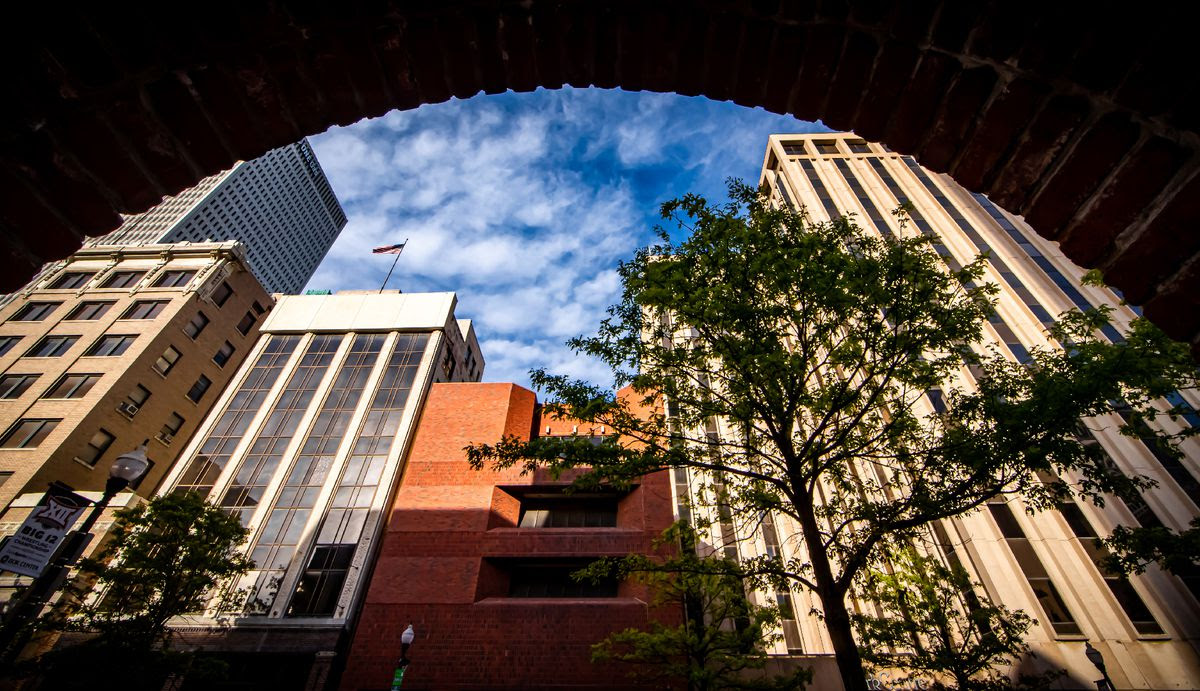:no_upscale()/cdn.vox-cdn.com/uploads/chorus_asset/file/24715433/2020_04_18___PhilClarkinHR_0007.jpg)
The truth is that Tulsa overall is doing a surprisingly good job of making itself a place where young tech and other knowledge workers and their growing families want to be. Tulsa Remote started offering remote workers the headline-grabbing $10,000 sum to move to the city back in 2018. The program also offered a place where they could find relatively affordable housing, access to free coworking space, and the subsidized opportunity to reimagine their lives anew somewhere else. So far, the program says it has brought 2,400 people from places like New York and New Orleans, from San Francisco and San Antonio, from Omaha and even Americans from abroad to relocate smack-dab in the middle of the country.
:no_upscale()/cdn.vox-cdn.com/uploads/chorus_asset/file/24715387/2020_04_06___PhilClarkinHR_9230.jpg)
What has made these remote workers stay is less obvious. Impressively, 90 percent have remained in Tulsa beyond the requisite one-year commitment, and 76 percent of all members have been there since the program launched. People are buying homes, starting families, and getting involved in the community. From my conversations with roughly two dozen Tulsa Remoters, it seems that community, not the cash, is the special sauce that’s made the program work.
Ultimately, the Tulsa Remote model could serve as a blueprint not only for other landlocked cities hoping to reinvigorate their economies and communities. It could also inform big cities on how to maintain their status as attractive places to live.
A study published by the Brookings Institution last year found that people in the Tulsa Remote program had a higher chance of staying in their communities long term and higher levels of community engagement than those who were accepted but did not join.
“The program has been remarkably successful in not only being able to attract remote workers to Tulsa, but also in keeping them, in fully embedding them in the local community,” one of the report’s authors, Thomaz Teodorovicz, an assistant professor at Copenhagen Business School, told Vox. The program did so, he said, by attracting people who are already interested in building community and then facilitating that community-building, with events — there are about 15 each month, including orientations — and by setting up one-on-one introductions with community members.
But what’s perhaps most integral to building the community is much more quotidian: Slack. This software platform is best known for helping coworkers communicate from anywhere, but in this case, it helps people in the program connect with their new neighbors. When someone is accepted into Tulsa Remote and schedules a visit, they’re allowed to join five introductory Slack channels, where they can begin talking to existing members. Once they’ve joined the program, they’re privy to 160 such channels, which cater to a variety of interests and purposes, from parents with kids in certain age groups, to book and biking clubs, to a marketplace channel akin to Craigslist. The channels have guidelines and 10 community moderators to make sure nothing goes off the rails. People seek advice, invite others to join them at concerts, and organize community service.
The result is a bit like an idyllic early Facebook or Nextdoor, and every Tulsa Remote participant I spoke to said the Slack channels were integral to the community.
Overall, Tulsa Remote helps get at a problem with modern living: People crave community, but it can be hard to find or build. As a society, we often neglect how difficult it can be to make friends as adults. The pandemic only made the situation more dire, as people in coastal cities were often isolated in their small apartments. They spent a lot of time reconsidering what they wanted out of life, and for many, a more fulfilling social and community life became a top order.
When I asked Elena Haskins, a 26-year-old UX designer who had been living in New York City, what ultimately made her choose to move to Tulsa, she said it was the “allure of that sense of community” she’d glimpsed from visiting and from talking to the people in the program on Slack.
“They were like, ‘This is so great. I made all these friends. I have these new hobbies. I started a new business,’” said Haskins. “And so hearing that, it just didn’t leave my head. I kept thinking, maybe that could happen to me.”
The trick will be retaining the vibrancy — and accessibility — of that community as it grows.
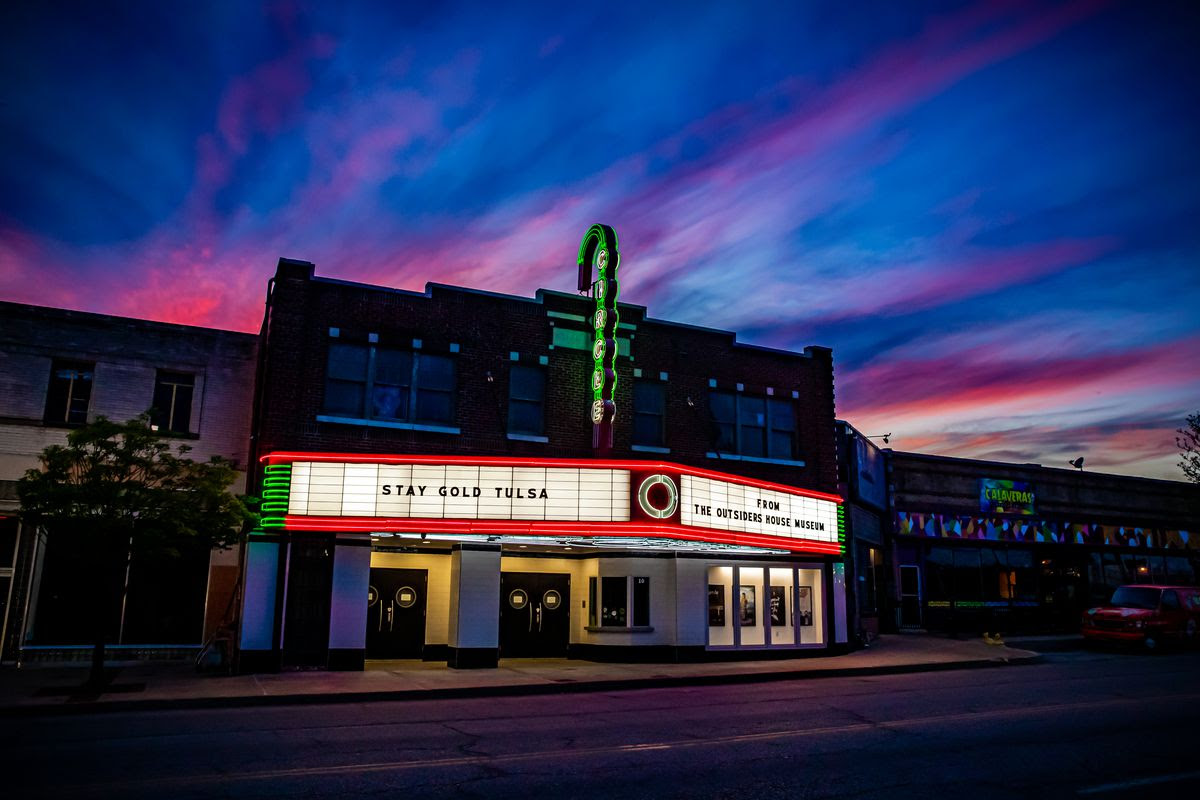:no_upscale()/cdn.vox-cdn.com/uploads/chorus_asset/file/24715392/2020_04_18___PhilClarkinHR_0122.jpg)
:no_upscale()/cdn.vox-cdn.com/uploads/chorus_asset/file/24715426/2020_06_19___PhilClarkinHR_0594.jpg)
Making a city people want to live in
On my first full day in Tulsa, Grant Bumgarner showed me around town in his Hyundai Elantra. The 26-year-old is a fifth-generation Tulsan who wore cowboy boots and told us about leaving for college at Northwestern but coming home after graduation to work as a community manager for Tulsa Remote. He’s now a director of its subsidiary, Experience Tulsa, which introduces out-of-towners, including those accepted into the Tulsa Remote program, to the city.
The tour started at a coworking space called 36 Degrees North. Located at an old Ford manufacturing plant in the center of the Arts District, the self-described basecamp is free to Tulsa Remote members and tends to be full of people plodding away on laptops, building startups, or working for far-off companies. The city has generally made smart use of its historic, Instagram-ready architecture, as well as its abandoned and empty spaces, where there are fewer hard feelings when new people and projects move in.
“In Tulsa, our downtown was so bombed out for so long, it’s like, ‘Oh, no, that was an empty warehouse for 40 years. I’m glad that’s a restaurant,’” Bumgarner said. “Quite literally everything you see was either a vacant warehouse space or a parking lot.”
As we drove past once-abandoned spaces that are now full, it’s clear the city is punching above its weight in terms of amenities. Those include everything from an impressive number of museums, cultural centers, and music venues to hip coffee shops, bright murals, and buzzy restaurants. On some street corners, we saw racks of electric bikes that are part of a bike share network called This Machine, a reference to Oklahoma singer and activist Woody Guthrie, who prominently displayed the slogan “This machine kills fascists” on his guitar. It all felt very cool, but not too cool.
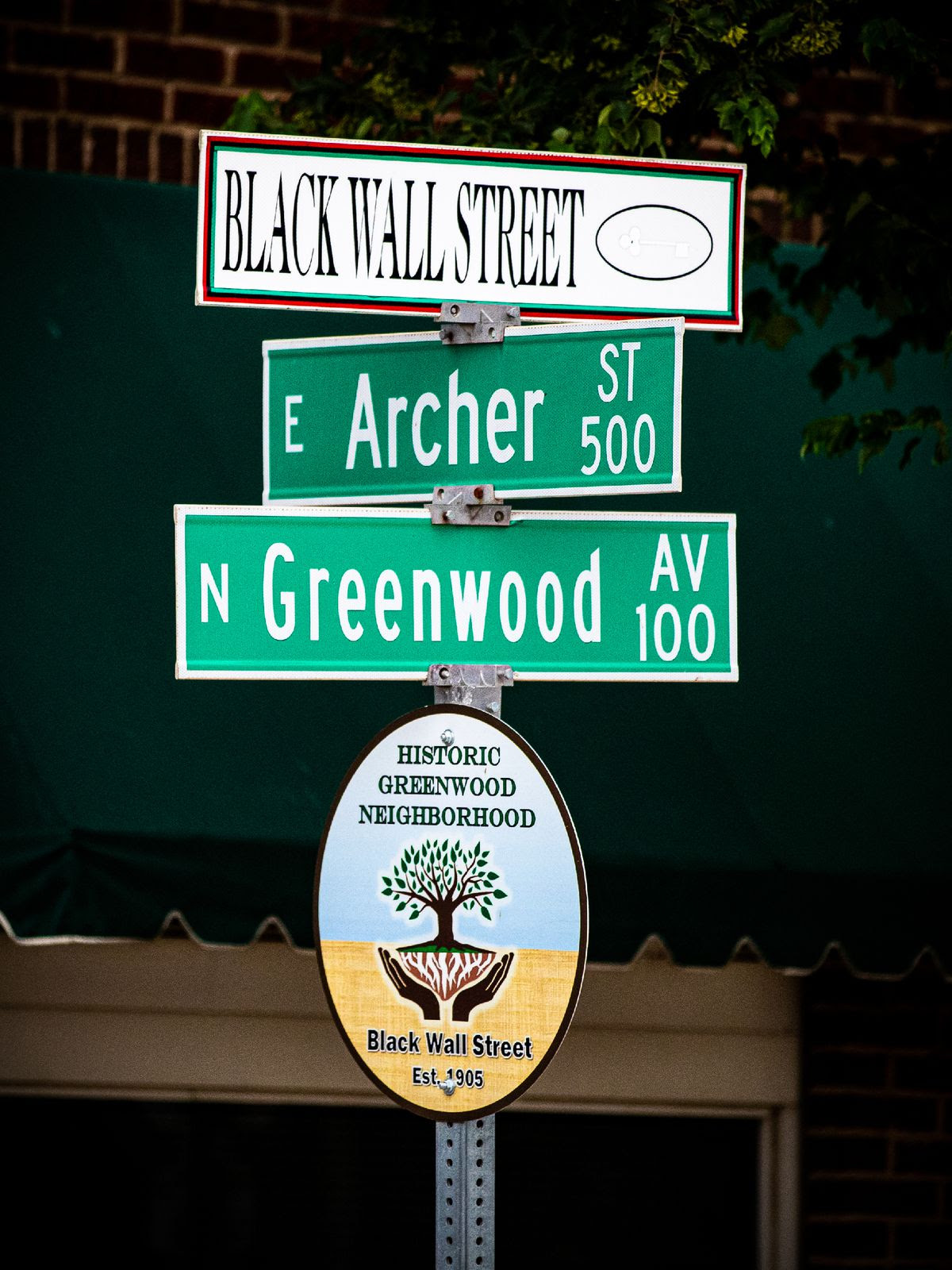:no_upscale()/cdn.vox-cdn.com/uploads/chorus_asset/file/24715440/R2_2020_06_19___PhilClarkinHR_0893.jpg)
When we entered the Greenwood District, Bumgarner pulled over and pointed out a sign for Black Wall Street. The area was once home to one of the most affluent black communities in the United States, before white rioters destroyed it in 1921. After years of covering up what’s now known as the Tulsa Race Massacre, the city of Tulsa has more recently embraced its troubled past, holding a centennial in 2021 to memorialize the event and to honor the legacy of the town’s Black residents. The area is once again home to a growing number of Black-owned businesses as well as Greenwood Rising, a historical center geared to educating visitors about the massacre and the long history of racial violence in the US.
After heading three miles down the Arkansas River, we arrived at the Gathering Place, an eye-popping public park that opened in 2018. Designed by renowned landscape architects Michael Van Valkenburgh Associates, also responsible for New York’s Brooklyn Bridge Park and Chicago’s Maggie Daley Park, the sprawling collection of berry-laden trails and open meadows includes everything from wildflower-lined basketball courts to more than 100 inventive playground structures.
:no_upscale()/cdn.vox-cdn.com/uploads/chorus_asset/file/24715226/5_1_23_All_GP_Photos__Patrick_Quiring_of_PQ_Multimedia__7.jpg)
Like Tulsa Remote, the Gathering Place was funded in part by the Tulsa billionaire George Kaiser, who’s pledged to give away more than half his wealth, most of which so far has gone toward improving the lives of young Tulsans. You could argue that spending is also geared at attracting new people to come and stay in Tulsa. There are other cities with their own billionaires, but it’s hard to overstate the extent to which Kaiser’s largesse — his early education programs, coding initiatives, and tech accelerators — has left a mark on Tulsa, where some locals jokingly call him “Daddy Kaiser.”
Of course, not every city has a billionaire to bankroll its best efforts, but not everything in Tulsa is a billionaire’s doing. Tulsa and its citizens deserve a lot of credit for improving their city, passing a series of capital improvement bills in which hundreds of millions of taxpayer dollars go toward making Tulsa a better place to live. That includes damming the Arkansas River to create a lake for recreational use.
Generally, it was hard to find much criticism of the Tulsa Remote program itself, but one refrain was that more money should be spent on getting Tulsans to stay than paying others to move there.
David Basteri, a mental health technician who’s been in Tulsa for 40 years, said his interactions with Tulsa Remoters have all been good. But he added, “Some people get upset with rising rents, and people that have already been here for a long time feel like maybe they should get some of that money, too.”
I did speak with a restaurant server who’s now studying machine learning and a hairdresser who’s taking courses to be a full-stack engineer at a technical college alternative called the Holberton School. Thanks to a partnership with the George Kaiser Family Foundation, attendees can apply to receive a $1,500 monthly stipend. Tuition is free until they’re gainfully employed, when they have to pay back a share of their income that’s capped at $85,000.
Their training means not just a good job, but potentially a good remote job — much like the ones people in Tulsa Remote have.
“I have a daughter to take care of, and what can I do from home if there’s another pandemic that I can still provide for me and my daughter?” Taylor Woodson, the future full-stack engineer, who wasn’t able to do hair for six months during the pandemic, said. “And it was this.”
The political barrier to entry
From a band of windows in the mayor’s office, you can survey most of Tulsa below, watching the storms rolling in long before everyone else. But when I visited Mayor GT Bynum, who wore a blue suit and his signature orange keyhole glasses, it was sunny, and he was upbeat.
Bynum is a pro-immigration, pro-diversity Republican, one who thinks it’s important to spend taxpayer dollars on making the city a better place to live. Some of his relatively progressive views run counter to what’s happening in Oklahoma, a very red state that hasn’t voted for a Democratic president since Lyndon B Johnson, and which recently enacted a series of regressive laws for people of color, women, and LGBTQ citizens. Bynum, 45, recognizes that such laws could hamper his city’s attractiveness, but he also takes the long view. Programs like Tulsa Remote, whose members tend to be more diverse than the city overall, and the city’s initiatives to encourage immigration will bring in people who will shape the laws in their image, Bynum told me.
“I’m a big believer that you get better policy and you make better decisions when you have a diversity of viewpoints and life experiences around the table,” he said. “Now, that does not make it easy or comfortable in the immediate term, but the reality is that there is great potential to build the kind of community people want it to be over time.”
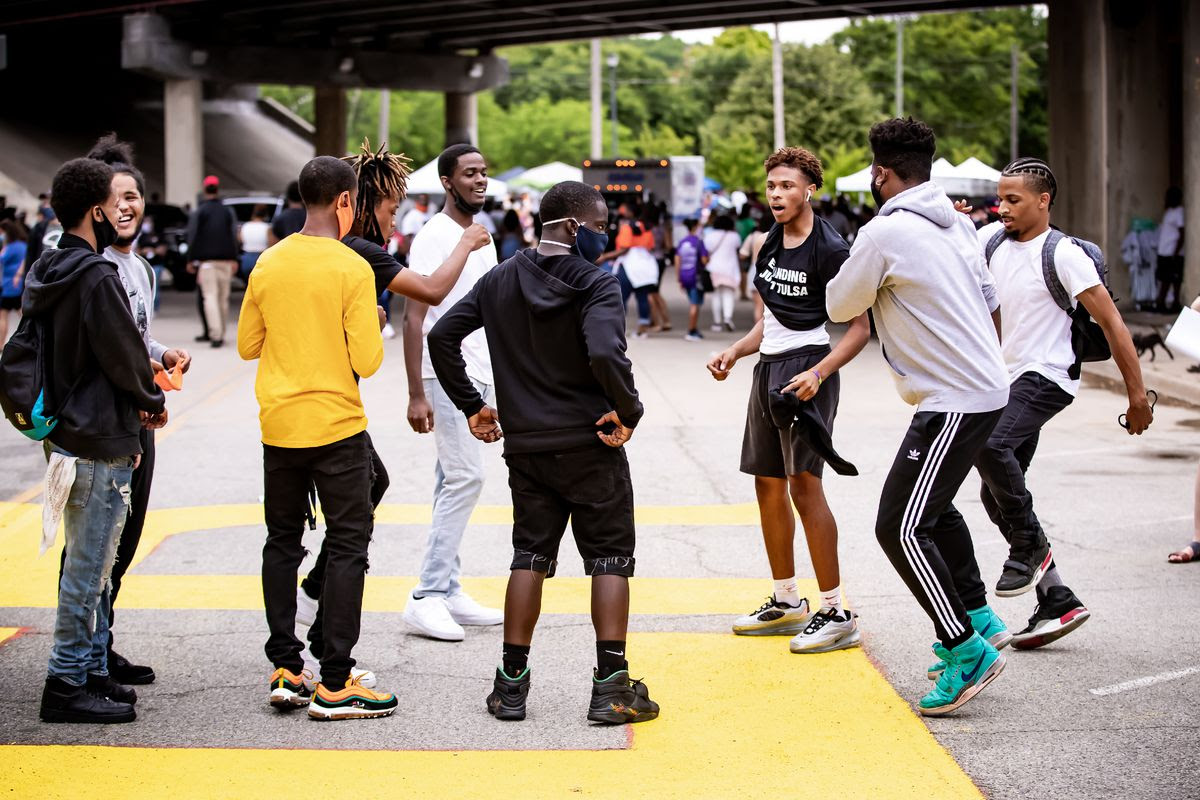:no_upscale()/cdn.vox-cdn.com/uploads/chorus_asset/file/24715270/2020_06_19___PhilClarkinHR_0878.jpg)
Bynum, a fifth-generation white Tulsan, hadn’t heard about the Tulsa Race Massacre growing up, but championed bringing its history to light for the 2021 centennial. That same year, however, the Oklahoma legislature enacted a law that made it illegal for schools to teach concepts that deal with systemic racism and the country’s history of oppression, part of a broader Republican disinformation campaign around so-called critical race theory. So while educators can ostensibly still teach that the Tulsa Race Massacre happened, the law may prevent them from discussing the underlying power dynamics that enabled it.
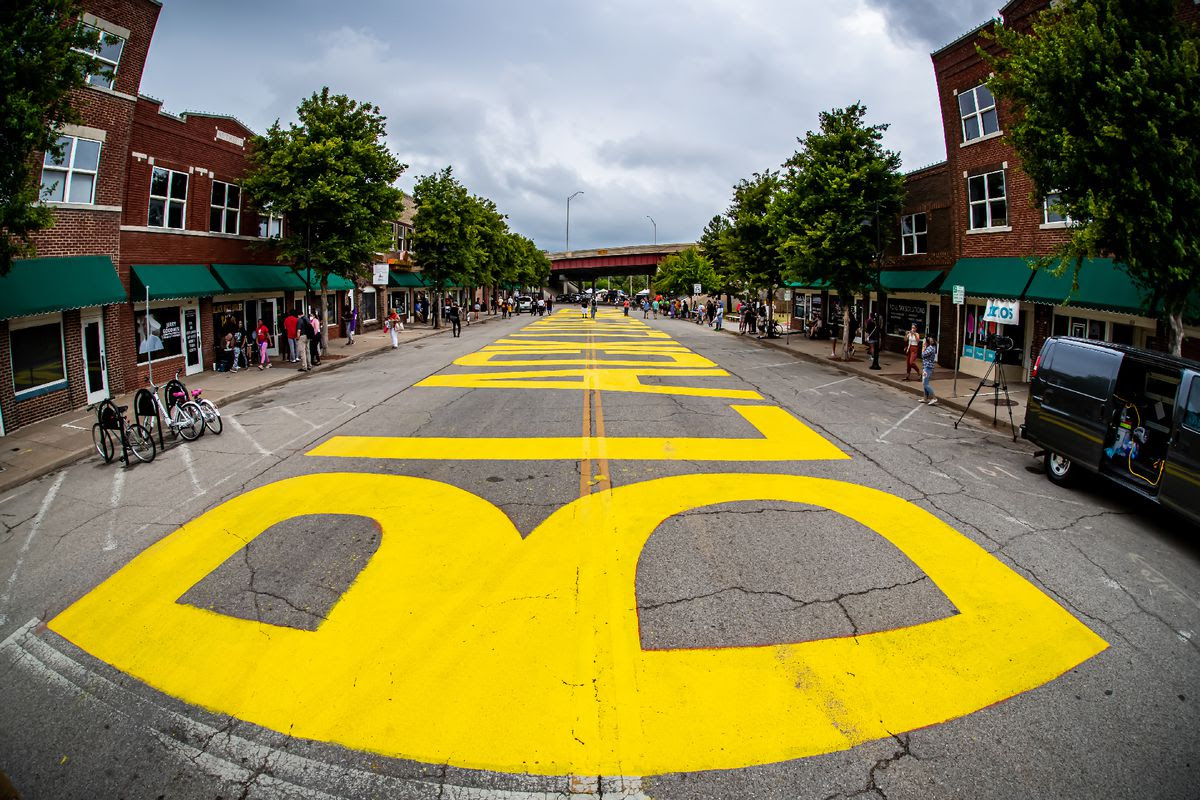:no_upscale()/cdn.vox-cdn.com/uploads/chorus_asset/file/24715265/2020_06_19___PhilClarkinHR_0605.jpg)
The Republican-led state legislature has also taken action against women’s and LGBTQ rights. Last year, Oklahoma’s governor signed into law the strictest abortion ban in the country. More recently, the state’s highest court found that its constitution would allow an abortion to protect the mother’s life, but already the confusing and contradictory laws are jeopardizing women’s health. And just last month, the state banned gender-affirming care for young people. That followed previous bills that barred transgender people from sports teams and from using bathrooms that align with their gender identity.
These laws can be a barrier to many considering moving to Oklahoma. A survey last summer of those who had been accepted into Tulsa Remote but hadn’t yet moved found that of the 150 or so who decided to decline, nearly 40 percent cited politics as their reason.
The political situation in the state also weighs heavily on people like Montana Cain, even though she’s ultimately happy with her move to Tulsa, where she met her partner, started her own consulting business, and found a strong social network.
“I have a large community that looks like me and understands my lived experiences and shared lived experiences, so I have a little bubble,” Cain, a 40-year-old Black woman who moved from South Carolina, said. “It’s when I have medical issues or when I have to step out or take a road trip that I’m hyper-aware.”
For Cain, that awareness means skipping stops at smaller gas stations when driving to Oklahoma City and opting for hospitals without religious affiliations. It also means she’s uncertain about her long-term future in the state.
“As a business owner, as a single woman, it’s great. It’s fine. I can navigate that. But as I think about family and approaching motherhood, that’s a harder decision for me.”
:no_upscale()/cdn.vox-cdn.com/uploads/chorus_asset/file/24715382/2020_04_18___PhilClarkinHR_0041.jpg)
Cashing in on a remote future
As you walk toward the outskirts of Tulsa, where most of the city lives, big buildings quickly give way to tree-lined streets filled with single-family homes. Unlike downtown and its Art Deco skyscrapers, there’s no unifying architectural style here. It’s a charming mix of everything from Tudor to Craftsman to Spanish Colonial. Together with its public amenities, Tulsa’s neighborhoods give the feel of a place much more affluent than its cost of living, with cheap beer, gas, and housing, would suggest.
In April, the average price of a home in Tulsa was $191,000, according to Zillow, well below the national average of $339,000. I, for one, immediately checked online real estate listings, sending my sister a link to a sprawling, pristine midcentury modern house on a wooded lot that would have been impossible to afford anywhere else. The housing prices are a revelation for many people in the Tulsa Remote program, too, where the mean income is more than $100,000 a year.
“I was in a six-unit apartment and the walls were paper thin and the neighbors were really not good neighbors and it was destroying my safe haven,” Laura Landers, a 32-year-old social media manager and designer who came to the city with Tulsa Remote, said of her previous living situation in Los Angeles. “I always knew I wanted a house. I’m like, where on Earth can I buy a house and I can afford it, being a broke millennial?”
The flip side to becoming a popular place to live is that the price of housing goes up. Since January 2020, the average home price in Tulsa has risen 47 percent, according to data from Zillow, slightly higher than the national level of 41 percent in that time. New demand for housing in the area, including from Tulsa Remote workers, of whom more than 400 have bought homes, has likely helped contribute to rising housing costs.
The city recently assessed its housing stock and found that there’s currently pent-up demand for 4,000 more housing units, a number expected to more than triple in the next 10 years. In August, residents will vote on whether to commit $100 million toward a new housing initiative. Otherwise, it’s easy to see a scenario in which Tulsa becomes just another city in which young families get priced out.
And herein lies the rub for Tulsa and all the other American cities and towns hoping to capitalize on the continued popularity of remote work: How do you make your location an attractive place to be without ruining what’s appealing about it in the first place?
Nearly half of Americans who can work from home do so in a hybrid manner now, meaning they’re only going into the office some of the time, according to WFH Research, which doesn’t expect remote numbers to move drastically in the future. Another nearly 20 percent of knowledge workers are still fully remote. More than three years after the world went on lockdown, these remote situations have begun to feel more permanent than they had during the pandemic. Indeed, Tulsa Remote hasn’t seen a dip in interest, despite the so-called return to the office. The program, which had felt like an experiment before the pandemic, now feels more like a pilot project for other cities.
Remote work has big implications for cities, whose centers of gravity have shifted closer to residential areas since residents don’t have to commute as often. It also holds a lot of promise for smaller cities — dozens across the country, from Bentonville, Arkansas, to Muncie, Indiana — all looking to slice off a little bit of that economic diversity for themselves by courting fully remote workers.
Whether other cities can replicate Tulsa Remote’s success will depend on a number of factors, including their ability to convey that they’re an “under-appreciated asset” or to come through on promises of community, according to Matthew Kahn, an economics professor at the University of Southern California and author of Going Remote: How the Flexible Work Economy Can Improve Our Lives and Our Cities. Warm weather, cheap housing, and quick flights elsewhere are also big pluses when it comes to attracting people (it took me, like many visitors, two flights to get to Tulsa). Mustering a strong, headline-winning incentive like Tulsa Remote’s “shrewd” $10,000 also helps, he said.
“There’s many people who it’s never crossed their mind to think about moving to Oklahoma,” Kahn said. “For folks looking to reinvent themselves, for folks who might have roots in the general area, Tulsa is signaling that it is open for business.”
:no_upscale()/cdn.vox-cdn.com/uploads/chorus_asset/file/24711933/Vox_05.jpg)
Tulsa, like these other places, will have to find a way to retain what makes it special while adapting to a new future. One key aspect of all this will be for the city to invest in public works that improve the lives of all its citizens. Tulsa also needs to protect what attracted people to the city in the first place, like affordable housing, while buffering against Oklahoma’s worst political inclinations. And Tulsa has to hold onto the community that made it all possible to begin with.
But its success is more than just a remote possibility.







